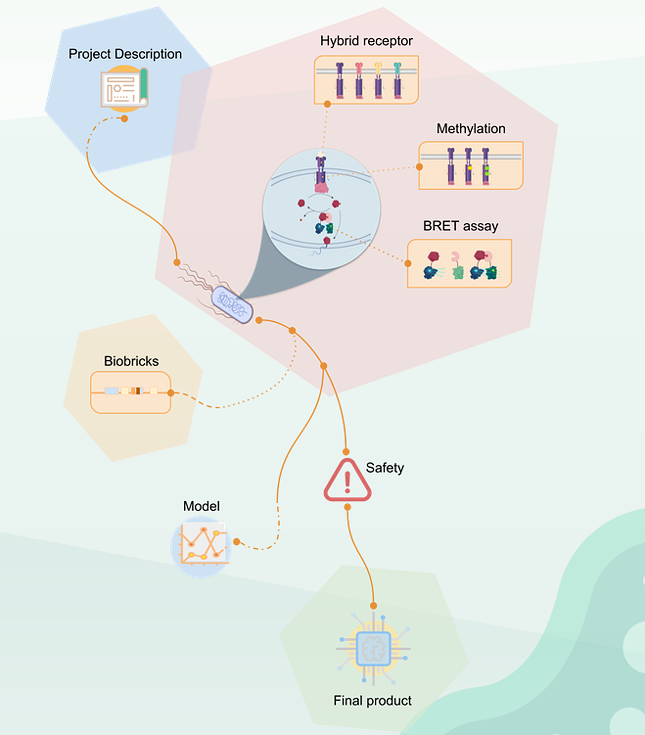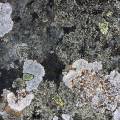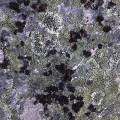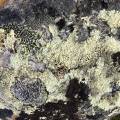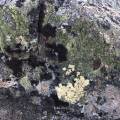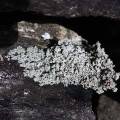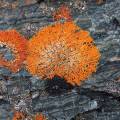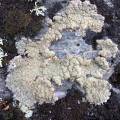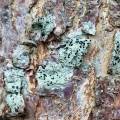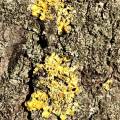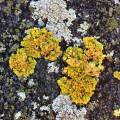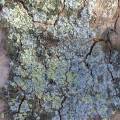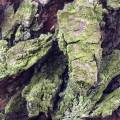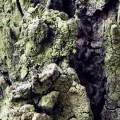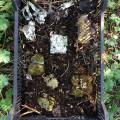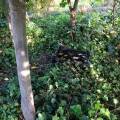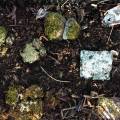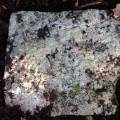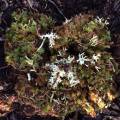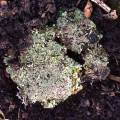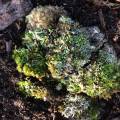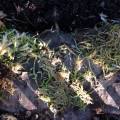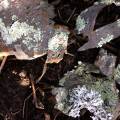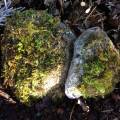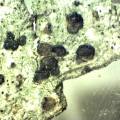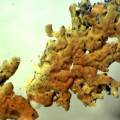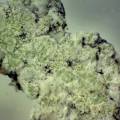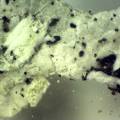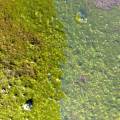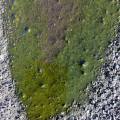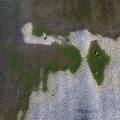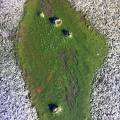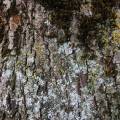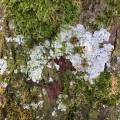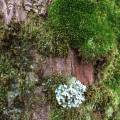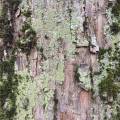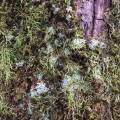Table of Contents
Pigmented bacteria and Lichen as organic Pollution Sensors
Open Biolab Brussels
DIY Bio Barcelona
Hybrid Forms Lab VU Amsterdam (Raoul Frese)
partners: VUB Brussels (chemical engineering), BioArt Society Helsinki (fieldworkshops), UPF Barcelona (complex systems lab), JRC Ispra
Bacteria
Bacteria are everywhere.They create living pieces of art, e.g. the Rock Paintings : bacteria keep their colors alive.
I want to work on artworks where the bacteria CREATE the piece (the design, the colors, the structure).
This can be induced/controlled/manipulated via nutrition and monitoring of temperature/humidity conditions. Many bacteria and Lichens get their food from the air, and they create or influence creation with following parameters:
- Reflection, light dispersion
- Luster, absorption, grating, polarisation
- Patterns, changing colours (mix different strains of bacteria to become different colours)
- Patterns will differ relating to different matrixes, variable growth medium
- Chromatics, optics
- other parameters that can have an influence
Onderzoeksvraag
Annemarie Maes wil in het kader van haar artistiek-wetenschappelijk onderzoek naar Intelligent Guerilla Beehives (biologische afbreekbare bijenkorven die bijen onderdak bieden en fungeren als biosensor) nagaan of de cellulosehuid (die de bijenkorf omhult)kan worden omgezet naar een voedingsbodem voor kolonies van symbiotische bacteriën die op de huid zijn uitgegroeid tot een biofilm. Wanneer een (te) hoge pollutiegraad deze bacterieën onder stress zet veranderen ze van kleur en weerspiegelen ze op die manier de mate van luchtverontreiniging.
voorstelling project SENSORIAL SKIN
AnneMarie Maes doet sinds een 10-tal jaar artistiek onderzoek naar stedelijke ecosystemen. Haar lange termijn projecten kunnen vervat worden onder de noemer ‘kunst/wetenschap’: een discipline waar de strikte aflijning tussen kunstenaars, wetenschappers en denkers overstegen wordt om op een multidimensionale wijze te reflecteren over de complexe relatie natuur/cultuur. Deze discipline belicht de relatie tussen kunst, politiek en ecologie vanuit het standpunt van de netwerk- en biotechnologie. O.a. wordt onderzocht in welke mate natuurlijke systemen resoneren met digitale systemen en hoe deze kunnen ingezet worden als aanvulling van digitale of electronische informatiebronnen.
Samenvatting: Annemarie Maes wil in het kader van haar artistiek-wetenschappelijk onderzoek naar Intelligente Guerilla Beehives (biologische afbreekbare bijenkorven die ook fungeren als biosensor) nagaan of de cellulosehuid (die de bijenkorf omhult) kan worden omgezet naar een voedingsbodem voor kolonies van symbiotische bacteriën die op de huid zijn uitgegroeid tot een biofilm. Wanneer een hoge pollutiegraad deze bacteriën onder stress zet veranderen ze van kleur en weerspiegelen ze op die manier de mate van luchtverontreiniging.
the Intelligent Guerrilla Beehive
Op en in het object IGB vinden vele (biologische) symbiotische relaties plaats. Maar vooral is het een sculptuur, een uiting van creatieve verbeelding waarmee onderzoek gevoerd wordt naar mogelijke toekomsten.
‘
Maar nu begint echter de zoektocht naar de juiste bacterie-stam die de taak van bio-pollutiesensor kan vervullen buiten het lab. We zijn op zoek naar bacterieën die uitgroeien tot een biofilm en die in leven blijven omdat ze gevoed worden door de pollutie die in het ecosysteem aanwezig is.
Hiervoor wil ik, samen met specialisten (een moleculair bioloog en een assistent-laborant) onderzoek voeren naar verschillende stammen van gepigmenteerde bacterieën, in het Open Biolab van Erasmus Hogeschool Brussel.
Eindresultaat & publieksbereik: tentoonstelling, publicatie
Publiek: verruiming kennisveld van de studenten, introductie tot bio-art van externe geïnteresseerden
Air Pollution
Air quality is affected by the atmosphere’s composition. The addition of pollutants created from various human activities gradually contributes to air quality deterioration. Studying surface ozone air pollution (ozone produced near the ground where people breathe) and using ozone sensitive plants, or those that show ozone-induced injury, as bioindicators will help develop an understanding of how human behavior affects air quality and foster an awareness of its environmental impact.
https://science-edu.larc.nasa.gov/ozonegarden/ozone.html
Pigmented Bacteria / outside shell
Conference non-human agents, art laboratory Berlin (2017)
http://www.artlaboratory-berlin.org/html/de-event-40.htm
Ted Talk - How Bacteria Talk:
https://www.ted.com/talks/bonnie_bassler_on_how_bacteria_communicate
Bacterial dyes in Fashion:
https://www.asm.org/index.php/general-science-blog/item/6929-bacterial-dyes-in-fashion
https://issuu.com/kukkadesign/docs/living_colour-ibook
Janthinobacterium lividum (Indigo):
https://en.wikipedia.org/wiki/Janthinobacterium_lividum
Streptomyces coelicolor (blue):
https://microbewiki.kenyon.edu/index.php/Streptomyces_coelicolor
Bacteria and Art:
https://microbewiki.kenyon.edu/index.php/Bacteria_and_Art:_Creation,_Deterioration,_and_Preservation
Living Color: Bacterial Pigments
http://journals.plos.org/plosbiology/article?id=10.1371/journal.pbio.1000510
Streptomyces coelicolor, faber futures
Streptomyces have a life cycle similar to that of fungi. The cycle starts with growth of vegetative mycelium from a spore, followed by ariel mycelium, and, then, spores.
Biomaterials smarten up with CRISPR
Genetically Modified E-coli
Probiotica: Lactic Acid Bacteria / inside nest
Lactobacillus plantarum als biosensor en als ondersteunende bacterie in de microbiome van de honingbij.
Pathogen elimination by probiotic Bacillus via signalling interference
Professor Sarah Lebeer is bio-ingenieur in de cel- en gentechnologie en als moleculair bioloog verbonden aan de Universiteit Antwerpen. Ze voert onderzoek naar bacteriën en de link met ons immuunsysteem, om een databank uit te bouwen met 'goede' bacteriën die onze gezondheid kunnen verbeteren, bijvoorbeeld via probiotica.
Sarah Lebeer
Campus Groenenborger
Groenenborgerlaan 171 - G.V.521
2020 Antwerpen
Tel. 032653285
sarah.lebeer@uantwerpen.be
research to do in the Open BioLab
Geur analyse van de componenten uit de beehive om zo te komen tot een ‘parfum’ dat een bepaalde beehive ‘vertegenwoordigd’. Verschillende hives kunnen vergeleken worden.
- honing/nectar
- propolis
- wax
- dust
- andere onbekende elementen
⇒ door distillering of andere methodes de geurmolecules in de stoffen gaan isoleren
‘Strikes’ maken in de hive en opkweken van de symbiotische bacteria
Vergelijking van bacteria tss. de verschillende hives. Komen dezelfde bacteria steeds terug?
Research the electrical possibilities of skin. Touchboard.
https://www.bareconductive.com/shop/touch-board/
Werken met fluorescent oplichtende bacteriën: in/uit de beehive (visualisatie), in de bioplastics
fablab: lasercut skin in specific patterns
FIBONACCI genealogy tree of bee colony
http://www.xxx-clairewilliams-xxx.com/projets/data-knits/?previous=knitting-machine-hack-ayab&type=documentation
bioplastics
- sawdust and bioplastic and blood
- sawdust & shellac (formafantasma, biomaterials)
- salmon skin
- sawdust and bacterial cellulose
pllution:
- Focus on lichen to measure pollution on the outside of the hive
- contact resp. scientists at Plantentuin Meise (lichen specialist)
- focus on Lactobacillus plantarum for inside of the hive
- continue aniways the research into pigmented bacteria for outside and for dyeing
Research on Biofilms
A biofilm is an association of micro-organisms in which microbial cells adhere to each other on a living or non-living surfaces within a self-produced matrix of extracellular polymeric substance.
Biofilm formation is a cooperative group behaviour that involves bacterial populations living embedded in a self-produced extracellular matrix. QS is a cell–cell communication mechanism that synchronizes gene expression in response to population cell density.
In biology, quorum sensing is a system of stimuli and response correlated to population density. … Many species of bacteria use quorum sensing to coordinate gene expression according to the density of their local population.
Genes encode proteins and proteins dictate cell function. Therefore, the thousands of genes expressed in a particular cell determine what that cell can do.
biofilm
quorum sensing
gene expression
coccolithophore, shell beehive??
Sporosarcina_pasteurii, healing bacteria
Pyrocystis_fusiformis, glowing microorganisms
Vibrio fisheri, glowing bacteria
Photobacterium phosphoreum, glowing bacteria
materiability information_materials.pdf
Lichen as pollutionsensor
A lichen is a composite organism that arises from algae or cyanobacteria living among filaments of multiple fungi in a symbiotic relationship. The combined lichen has properties different from those of its component organisms. Lichens come in many colors, sizes, and forms. The properties are sometimes plant-like, but lichens are not plants. Lichens may have tiny, leafless branches (fruticose), flat leaf-like structures (foliose), flakes that lie on the surface like peeling paint (crustose), a powder-like appearance (leprose), or other growth forms.
Lichens can resemble plants but they are fungi with photosynthetic partners (algae and/or cyanobacteria) and live on a variety of substrates (e.g. trees, rocks, buildings) exposed to the environment. The fungi extract food from their partners in exchange for providing them with nutrients and shelter. Can lichens survive climate change?
sensing_lichens.pdf
https://en.wikipedia.org/wiki/Lichen
https://stateoftheworldsfungi.org/2018/reports/SOTWFungi_2018_Full_Report.pdf
lichen dyes:
http://www.umilta.net/LichenDyeingEMB.html
https://www.sciencedaily.com/releases/2016/07/160721151213.htm ⇒ yeast
lichen pH paper:
http://www.madehow.com/Volume-6/Litmus-Paper.html
epifytische_korstmossen_in_brussel.pdf
Pollution monitoring with Lichens - D.H.S. Richardson (the Richmond Publishing Co.)
Grootste verschil is dat de gefotografeerde lichens in Kilpisjarvi voornamelijk op stenen groeien, daar waar de gefotografeerde lichens in Brussel epifytische soorten zijn (groeien op boomschors).
korstmossen_introductie.pdf
rapportdefbim.pdf

Pollution Monitoring with Lichens (D.H.S. Richardson, Richmond Publishing Co. 1992)
Below, Lichen on bark of Cornus mas (Brussels), Orange lichen on Rock (Kilpisjärvi), and twice green lichen on Birch bark (Kilpisjärvi).
Bacteria as a reflecting shield, source of energy
- artist in residence VU Amsterdam at the Hybrid Forms lab of Dr.Raoul Frese
- the plated cells of the coccolith Emiliana huxleyi (life at the Edge of Sight)
- … reflected light shows the exact size and location of the coccolithophore blooms and other phytoplankton blooms
- the mitochondria that produce the energy in eurkaryotic cells were once free-living bacteria, idem dito the chloroplasts which harvest light energy in plants and algae cells were once free living photosynthetic bacteria, the cyanobacteria (Margulis)
- research naar 'healing bacteria': biobrick (Sporosarcina pasteurii), bioconcrete (idem), sanddunes, … (book Biodesign / William Meyers)
Shallow Bacterial Shields, natural examples
on the rooftop of my studio in Brussels:
on the trees in Bergen, Norway:a symbiotic habitat of lichen and mosses

